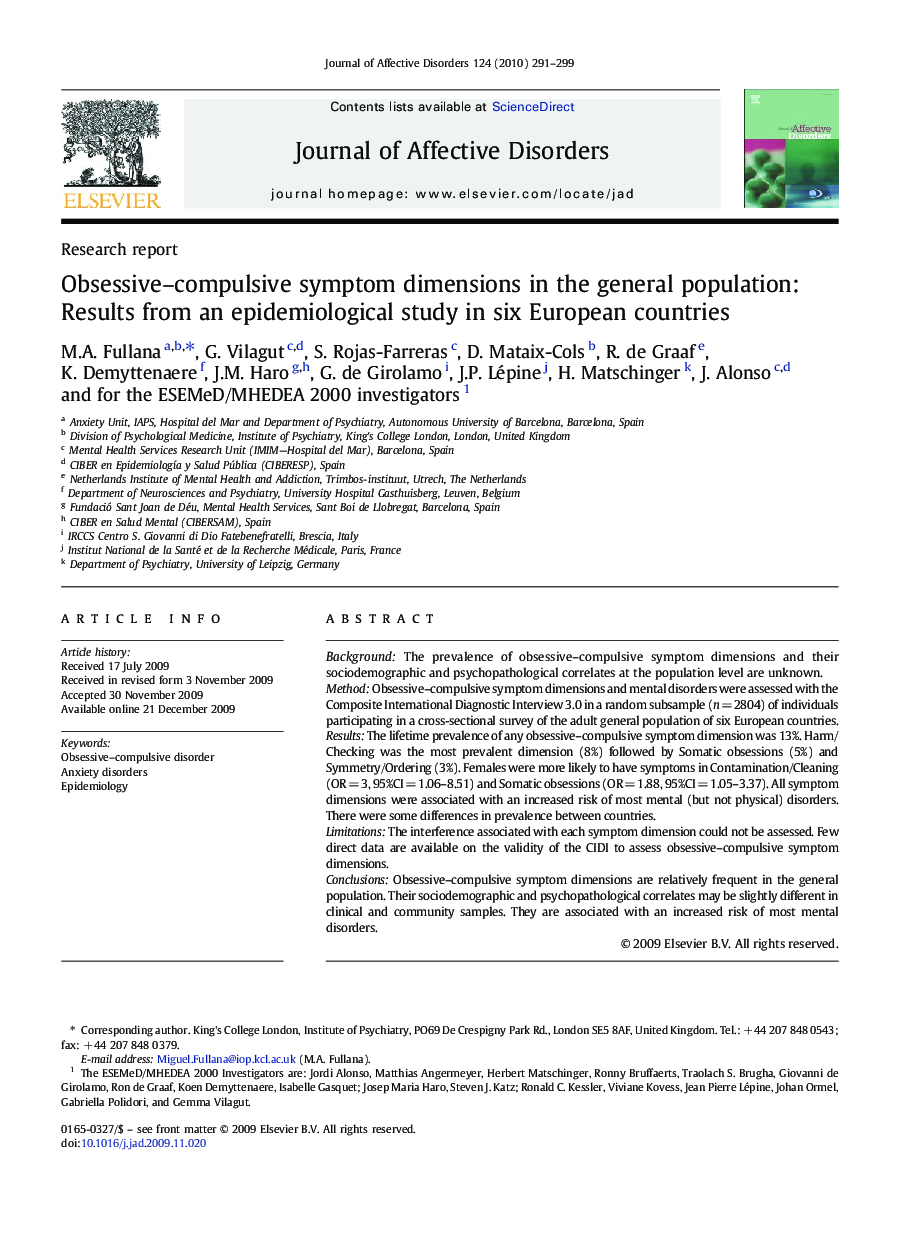| Article ID | Journal | Published Year | Pages | File Type |
|---|---|---|---|---|
| 4186744 | Journal of Affective Disorders | 2010 | 9 Pages |
BackgroundThe prevalence of obsessive–compulsive symptom dimensions and their sociodemographic and psychopathological correlates at the population level are unknown.MethodObsessive–compulsive symptom dimensions and mental disorders were assessed with the Composite International Diagnostic Interview 3.0 in a random subsample (n = 2804) of individuals participating in a cross-sectional survey of the adult general population of six European countries.ResultsThe lifetime prevalence of any obsessive–compulsive symptom dimension was 13%. Harm/Checking was the most prevalent dimension (8%) followed by Somatic obsessions (5%) and Symmetry/Ordering (3%). Females were more likely to have symptoms in Contamination/Cleaning (OR = 3, 95%CI = 1.06–8.51) and Somatic obsessions (OR = 1.88, 95%CI = 1.05–3.37). All symptom dimensions were associated with an increased risk of most mental (but not physical) disorders. There were some differences in prevalence between countries.LimitationsThe interference associated with each symptom dimension could not be assessed. Few direct data are available on the validity of the CIDI to assess obsessive–compulsive symptom dimensions.ConclusionsObsessive–compulsive symptom dimensions are relatively frequent in the general population. Their sociodemographic and psychopathological correlates may be slightly different in clinical and community samples. They are associated with an increased risk of most mental disorders.
